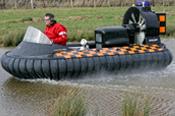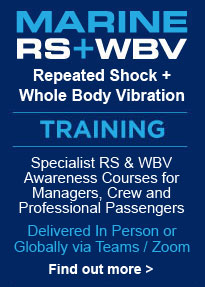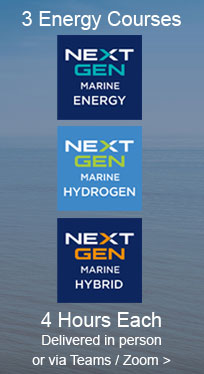New MCA Code For Small Hovercraft

06.03.2014

New UK MCA Code For Small Hovercraft Operations
Hovercraft have always challenged nautical authorities around the world. When Sir Christopher Cockrell pioneered hovercraft technology in the 1950's neither the Royal Air Force nor Royal Navy could decide who should conrol the new vehicle.
Hovercraft had roles in both military and commercial sectors. The SRN-4 hovercraft finished operating a ferry service across the English Channel in 2000.
The next generation of small hovercraft has a growing role to play in search and rescue, commercial and military operations around the world. But hovercraft have never had their own set of regulations for commercial operations and remain an issue for overstretched maritime authorities worldwide.
The UK, along with many countries, has struggled with legislation. For example even a small two seat hovercraft, engaged in survey work on intertidal mudflats, has previously had to adhere to Workboat rules, the High Speed Code (aimed at cross channel catamarans) and the ancient Hovercraft General Order of 1968.
It was against this background in 2012 that UK manufacturer Flying Fish Hovercraft approached the MCA (Maritime Coastguard Agency) to put in place a set of regulations which would allow small hovercraft to operate in a commercial role within UK waters. The objective was to address the differences in operating procedures, construction and usage relevant to these unusual vehicles. Teaming up with Griffon Hoverworks, and forming a manufacturers association with other UK manufacturers, work on the 'Hovercraft Code of Practice' (HCoP) is due to be adopted in 2014.
This new code means that small hovercraft should now be a practical option for commercial operations in areas inaccessible to other vehicles. Typical applications are for hovercraft to access mud flats, saltings, intertidal areas such as estuaries and bays, shallow rivers and flooded inland areas.
Large hovercraft over 24 metres carrying 12 passengers remain under the regulations of the High Speed Code. The new code has enabled an industry led effort to effectively categorise hovercraft under 24 metres into 3 categories: Ultra-Light / Light / Small.
Ultra-Light Hovercraft: This is a sensible development in legislation, with the smallest hovercraft to be reclassified from vessels to 'work equipment' which better reflects their usage. These craft, up to 500kgs, when crewed by up to four people will be excluded from a requirement for coding when not navigating - ie operating in a supported role, close to the shoreline in categorised waters. This means that whilst permits and permissions must still be obtained, the HCoP makes only advisory conditions.
Light Hovercraft: Hovercraft up to 1000kgs with less than 8 persons on board (including paying passengers) will now have a clear code, written by the industry, to work to. A major advantage is that hovercraft can now use petrol engines, as diesel is not a viable option with the smaller hovercraft contained in this category. As a bonus they can also 'qualify' as Ultra-lights when operating in a non-navigating role (ie mud survey etc). This is the entry level category for passenger operations.
Small Hovercraft: This category includes hovercraft up to 24m and with no more than 12 passengers on board.
The code should be in place and adopted by April 2014, and there are hopes that it will be adopted by other countries, which also struggle to understand hovercraft operations, and may see this code as a convenient option to put relevant regulations in place.
Smaller hovercraft are generally perceived to be environmentally sound, they do not exhaust into the water, create no wash, don't disturb the river or sea bed and exert less pressure on the ground than the tide. They're also economical and cannot hurt sea animals as there's no propeller in the water.
All images are copyright Hybrid Marine Power 2024 unless otherwise stated.
This does not exclude the owner's assertion of copyright over the material.
eNews
15.04.2024
MariNH3 Conference 2024
MariNH3 Conference 2024 is being held at Grand Plaza Hotel,…
eArticle
06.10.2023
Challenges of Unpredictable Marine Energy
From running Energy Transition training for significant maritime organisations technology…
Video
Round The World solar boat Turanor PlanetSolar
MS Tûranor PlanetSolar is the largest solar boat in the world. This 35 metre (115 feet) catamaran operates solely on…







